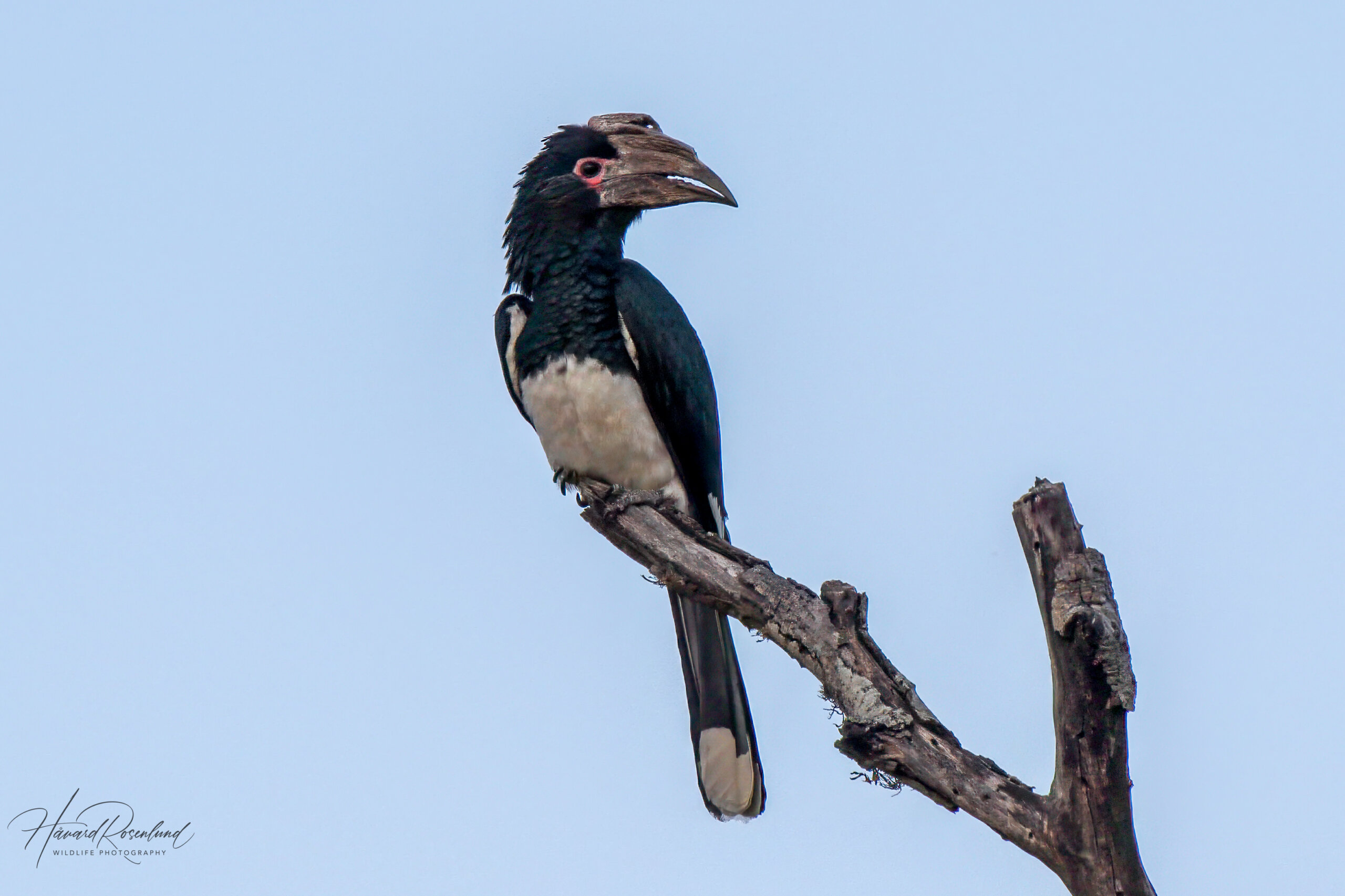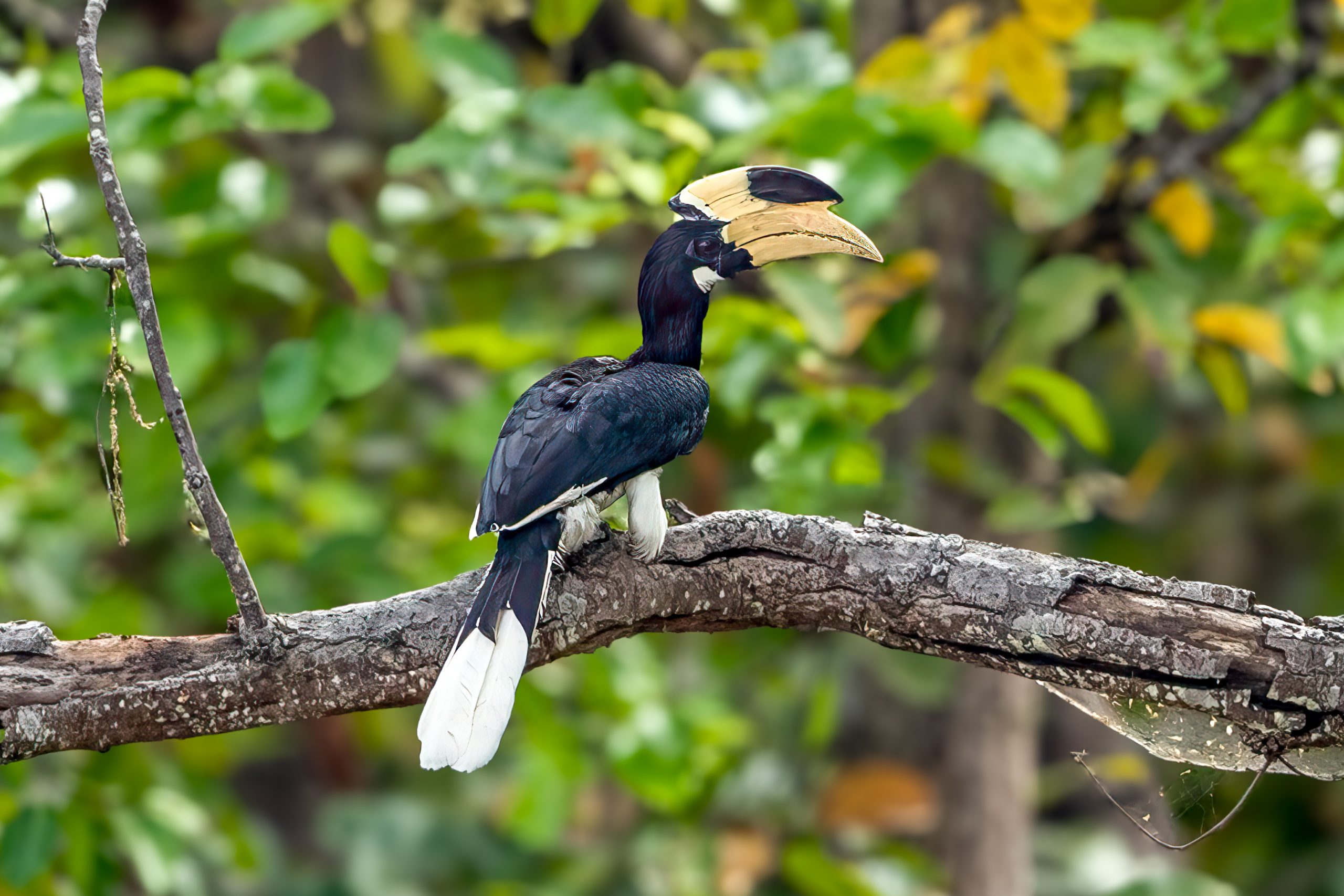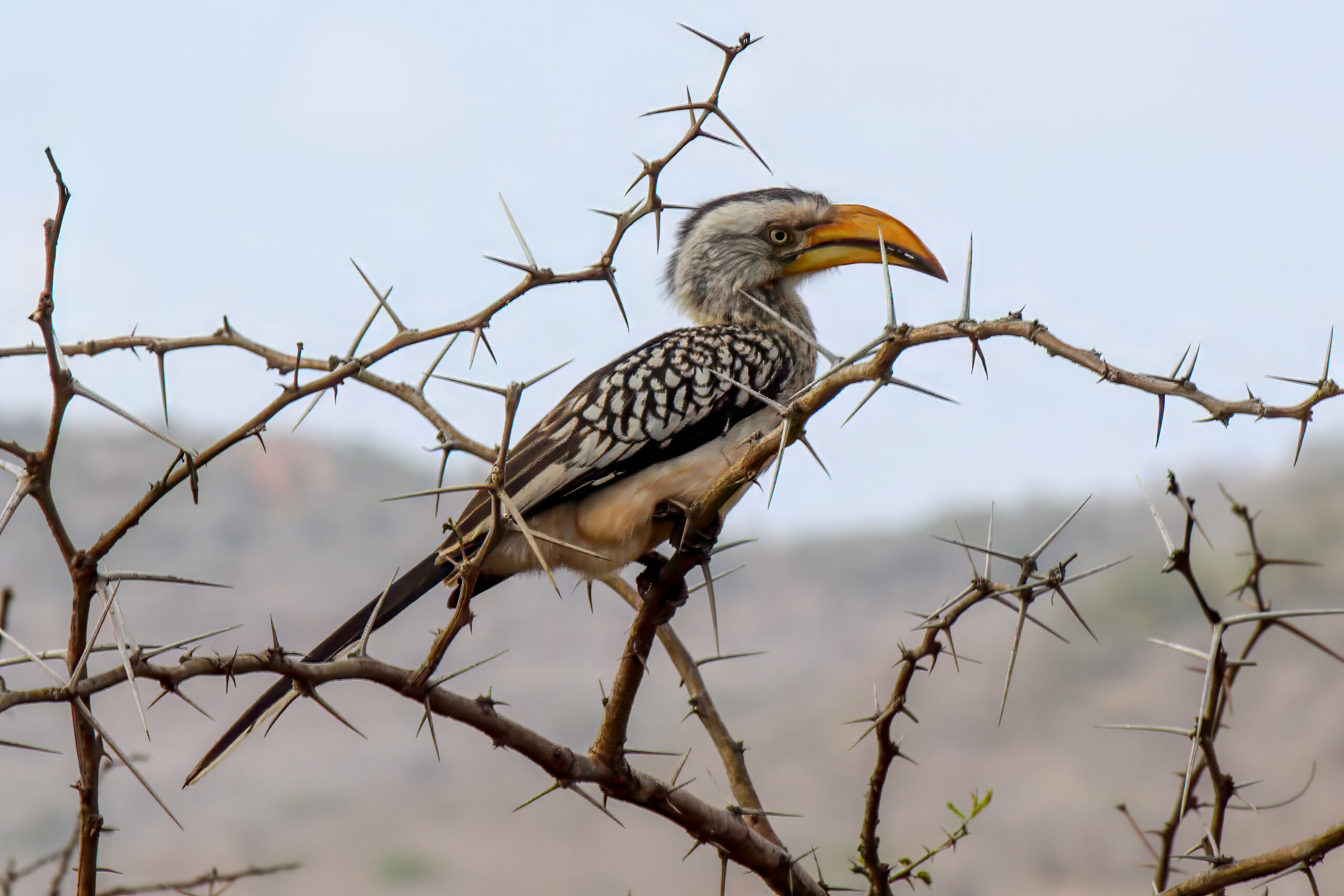Description
The trumpeter hornbill (Bycanistes bucinator) is a medium-sized African species of hornbill. Average length is 50-55 cm (20-22 in). It is easily recognized with its large casque, black body, white belly, and the red skin around the eyes. The casque is smaller on females, while on males it extends almost to the tip of the beak. White underwing coverts are seen clearly when in flight. Its call is a loud and nasal “waaah… waaah…”
Diet & habitat
The trumpeter hornbill prefers warm evergreen forests. Coastal forests and riverine forests are typical habitats. Diet consists mainly of fruits and berries, with various invertebrates acting as a supplement. They live and forage in small groups of two to five individuals, sometimes numbering up to fifty. They tend to spend the day foraging in one tree, before leaving for another the next day.
Nesting
Trumpeter hornbills typically use natural cavities in trees as nests. As with many other hornbills, the female locks herself inside the cavity with the help of the male by closing it with mud and faeces. Only a tiny slit allowing the male to feed her will remain. The female will then lay 2-4 eggs inside the cavity where she will incubate them for about 24 days. The male will forage for food and feed the female for as long as she stays inside the cavity. The chicks leave the nest after 50 days but will stay close to the nest for another week before joining the parents in their foraging. The female will stay inside the cavity from before she lays the eggs until the chicks finally leave the nest, a period that can last as long as 94 days.
Status
The trumpeter hornbill is widespread and very common within its distribution. There are no threats to the species, and it is listed as least concern on IUCN Red List. Trumpeter hornbills are also quite commonly kept in captivity and zoos as they are easily tamed, intelligent and inclined to learn tricks.







